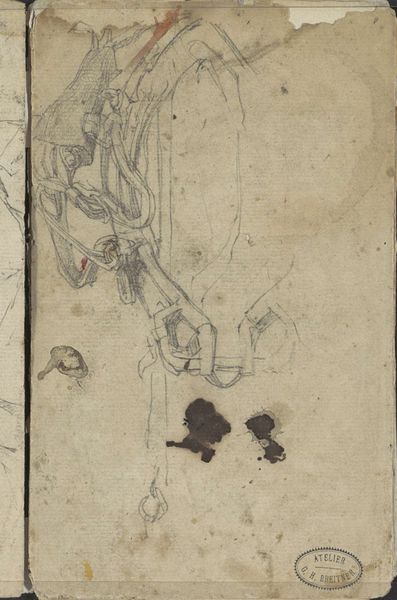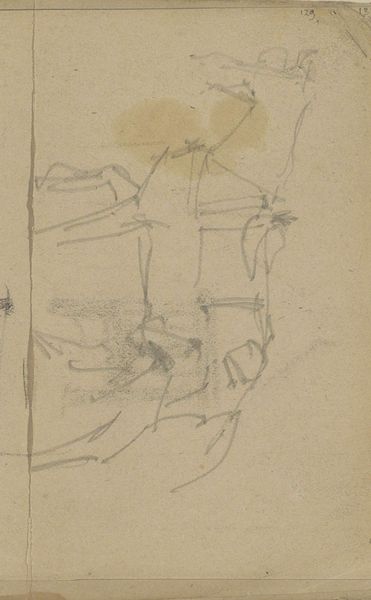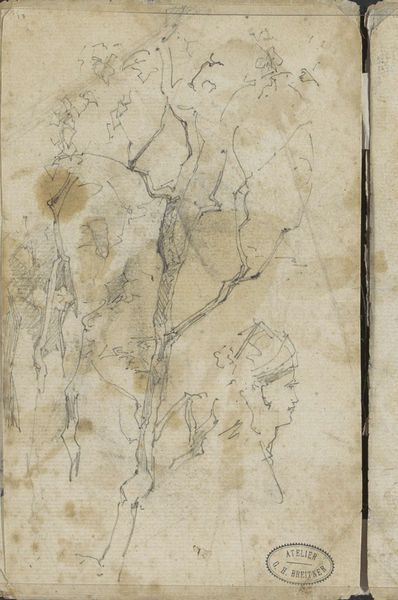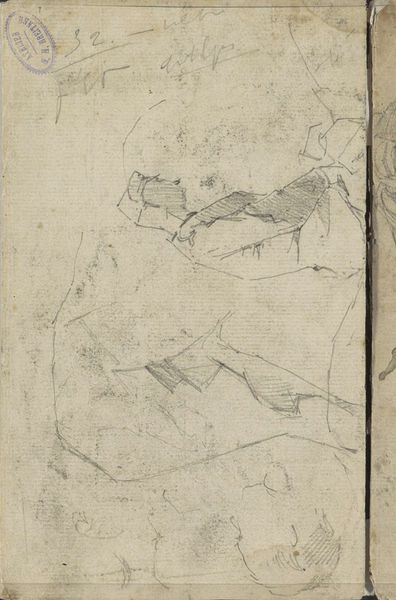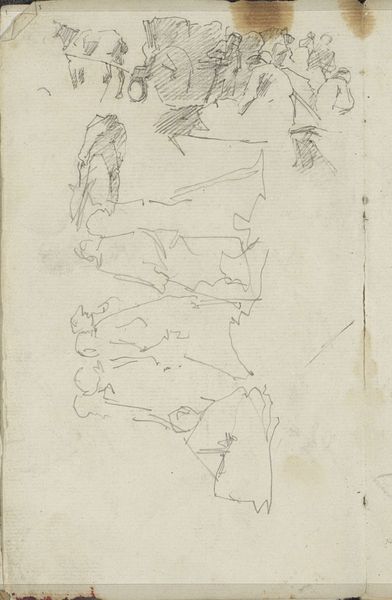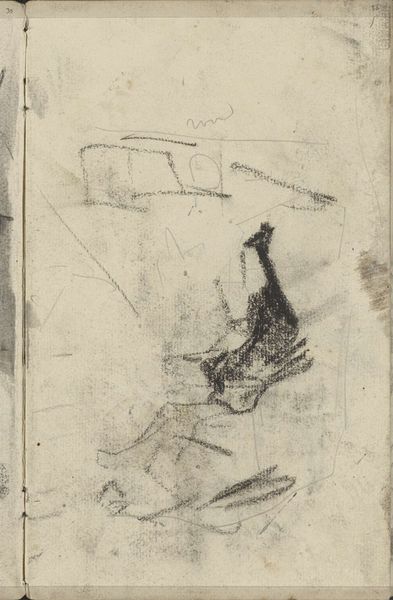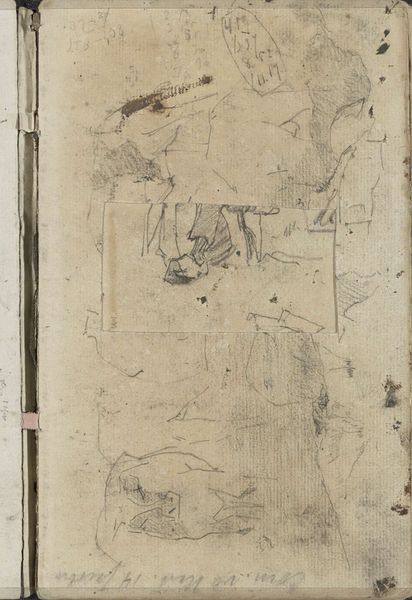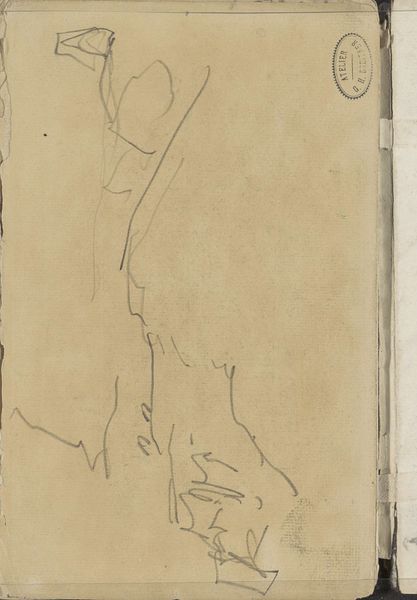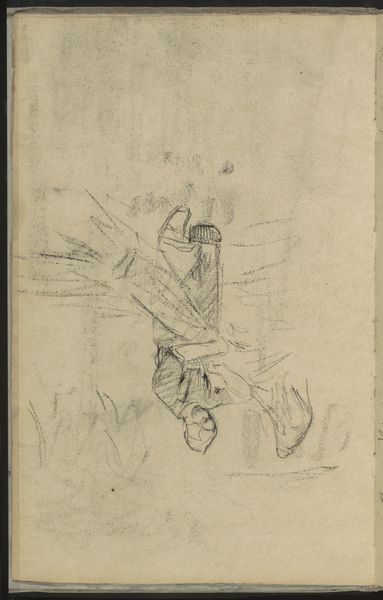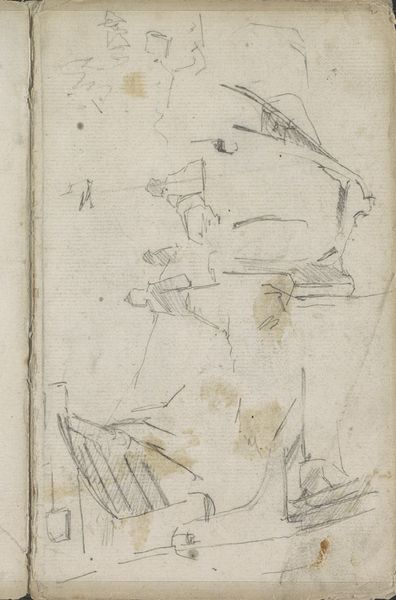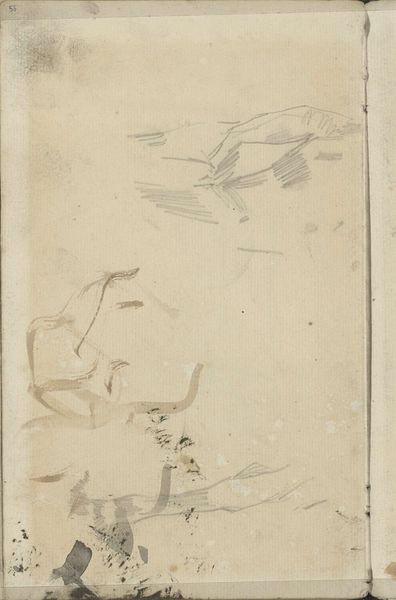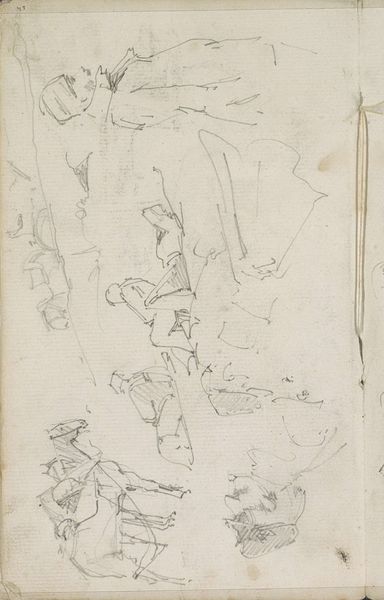
drawing, pencil, graphite
#
drawing
#
figuration
#
coloured pencil
#
pencil
#
line
#
graphite
Copyright: Rijks Museum: Open Domain
Curator: Well, hello there. Looking at George Hendrik Breitner's "Paardentuig," thought to be from between 1881 and 1886 and held here at the Rijksmuseum, what springs to mind? It's rendered in pencil, graphite and coloured pencil. Editor: A fleeting thought, almost like catching the scent of hay in the wind. There’s a fragmented feel. Is that haphazardness intentional? Curator: Breitner, known for his Amsterdam street scenes, certainly captures a slice of life here, doesn't he? This drawing really zeroes in on the functional beauty of horse harnesses—focusing our attention with sharp lines and attention to structural form. Editor: The starkness is surprising. It's a departure from the lush landscapes I associate with that period. Almost like deconstructing the romantic image of horses, laying bare the apparatus. Is it trying to show control? Curator: Perhaps. It could also represent an honest depiction of working-class life where horses played a pivotal role, although more like he’s pulling back layers. The lines are raw; the process is laid bare, maybe an exercise to find beauty in everyday objects. He reduces form down to its essence. Editor: I wonder what stories those harnesses could tell, eh? Of carriage rides, of labor in the fields... It really highlights their crucial contribution, while the sketch itself feels restless, unresolved somehow, like a melody without a clear ending. Curator: The medium absolutely matches that notion of impermanence. Paper and graphite – immediate and fleeting. The stains and marks across the piece underscore the practical aspect of the artwork that matches well with the horse theme too! Editor: Indeed! It’s all those little unintentional imperfections that draw you closer somehow. In short: nothing beats imperfectness. Curator: Absolutely. They infuse the drawing with something profoundly, imperfectly human, and you begin to glimpse into what the artist valued to reproduce so faithfully, in its lines and shadows and absent flourishes. Editor: Quite. An insightful prelude to our viewing it; now I have no choice but to view it differently. Thank you.
Comments
No comments
Be the first to comment and join the conversation on the ultimate creative platform.
